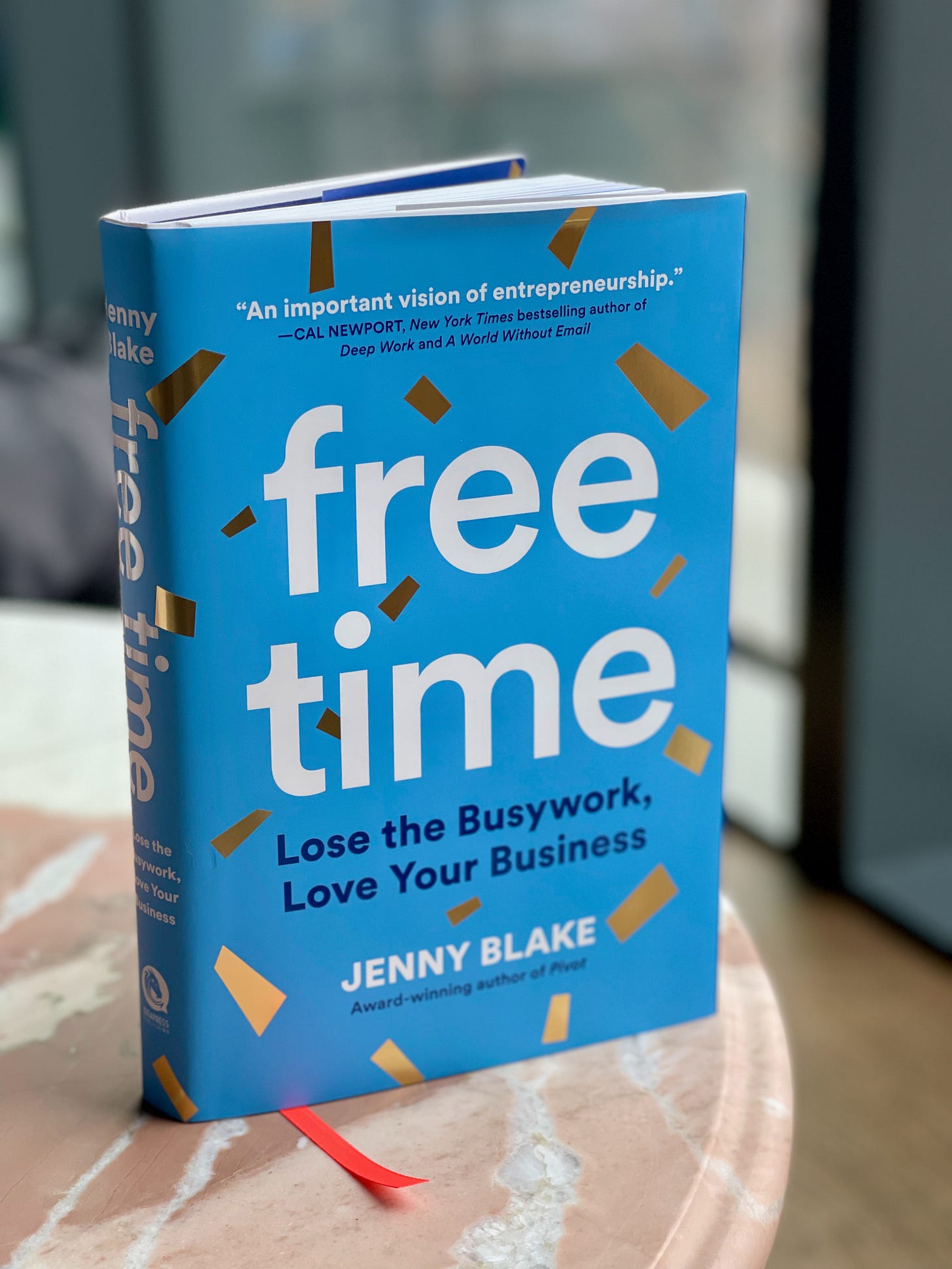📘 The Free Time Afterword I Never Wrote, Part 1
“Why don’t you publish a paperback edition of Free Time?” my friend Todd suggested six months ago, toward the end of a Zoom call in which he graciously agreed to help brainstorm ways to reinvigorate book sales.1
My mind skipped ahead to writing the afterword, the way I did for the Pivot paperback release six years prior, when I was working with a traditional publisher.2
A wave of shame washed over me. I only wished the floor of the windowless podcast recording studio could swallow me whole. My voice faltered as I fought back tears to share the humiliating reason I wasn’t sure this was a good idea.
Todd Sattersten is the publisher at Bard Press, a highly selective outfit that only publishes one non-fiction business book each year. He and his team are responsible for some of my all-time favorites, like The One Thing by Jay Papasan and Gary Keller.
Todd was curious about the frenzied efforts authors put into book launches, often met with arbitrary sales goals and opaque data from publishers, making it almost impossible to correlate activities with outcomes.
He wanted to know: how many book sales truly move the needle and ensure longevity?
With a dataset of 6,775 titles in business and self-help, published between 2012 and 2015, Todd studied Book Scan data to discover what he calls The Magic Number.
Indeed, he discovered that if you can get into the 10,000 to 25,000 copy range for first year sales, you have 42 percent chance of selling more than 25,000 copies in lifetime sales. There are few milestones that produce better odds for authors.
Because I went independent for Free Time, I took out a loan from a family member to fund the first six-figure print run of 10,000 hardcover copies (repaid one year later, hallelujah).3 Based on the experience with my previous two books, I figured (naively) that landing just a handful of speaking gigs or one new licensing client would earn this back and then some.4
I call these the collector’s edition, replete with a hand-stitched coral ribbon, two-color interior, gold foil confetti on the cover, and proudly printed in the U.S. of A:
On the day Todd and I zoomed, he gave me an extension on The Magic Number, which mean that I was aiming to hit 10K copies sold by the two year bookiversary on March 22, 2024. Even if my brainstorming at this late stage was merely magical thinking, I wanted to sprint through the finish of this next milestone.5
For a year and a half, I had been getting sales updates from the publisher. My impression was that we were quite close to hitting 10,000 copies sold.
By my calculation the total was 7,500 copies across all formats: audio, ebook, hardcover through retailers, comped copies I sent to early readers, and those that I sold directly in bulk to people and organizations.
With thanks to the incredible teams at Ideapress Publishing and Together Agency, the book also won seven publishing awards:
About halfway through the conversation, Todd looked up the BookScan data, which tracks Amazon and bookstores, representing about eighty percent of hardcover sales. I hadn’t seen that report yet, as only those who pay a hefty annual fee have access.
I waited with eager anticipation for the official tally.





